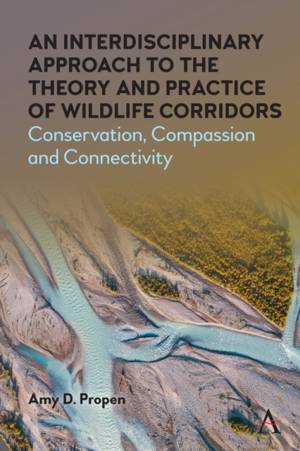
- Afhalen na 1 uur in een winkel met voorraad
- Gratis thuislevering in België vanaf € 30
- Ruim aanbod met 7 miljoen producten
- Afhalen na 1 uur in een winkel met voorraad
- Gratis thuislevering in België vanaf € 30
- Ruim aanbod met 7 miljoen producten
Zoeken
An Interdisciplinary Approach to the Theory and Practice of Wildlife Corridors
Conservation, Compassion and Connectivity
Amy D Propen
€ 177,45
+ 354 punten
Omschrijving
An Interdisciplinary Approach to the Theory and Practice of Wildlife Corridors charts some best practices and makes new theoretical contributions about the design and creation of wildlife corridors. The book provides the necessary background for understanding habitat connectivity projects, and makes a theoretical contribution to current knowledge about wildlife corridors.
Specificaties
Betrokkenen
- Auteur(s):
- Uitgeverij:
Inhoud
- Aantal bladzijden:
- 134
- Taal:
- Engels
- Reeks:
- Reeksnummer:
- nr. 1
Eigenschappen
- Productcode (EAN):
- 9781785279188
- Verschijningsdatum:
- 11/06/2024
- Uitvoering:
- Hardcover
- Formaat:
- Genaaid
- Afmetingen:
- 152 mm x 229 mm
- Gewicht:
- 367 g

Alleen bij Standaard Boekhandel
+ 354 punten op je klantenkaart van Standaard Boekhandel
Beoordelingen
We publiceren alleen reviews die voldoen aan de voorwaarden voor reviews. Bekijk onze voorwaarden voor reviews.











